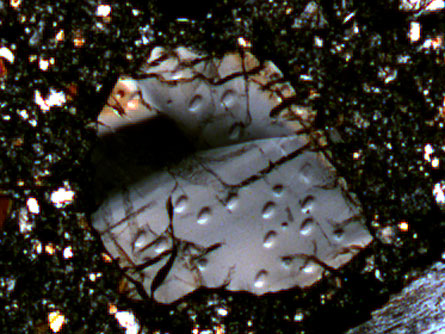A small mineral tidbit in a rock brought back from the moon in 1972 is giving scientists a big clue that our satellite’s surface was, for the most part, solidified by 4.4 billion years ago.

Previous studies suggest that the moon coalesced from debris thrown into space after a Mars-sized object slammed into Earth about 4.5 billion years ago (SN: 8/02/08, p. 12). Then, over a period lasting many millions of years, the moon’s surface — which was covered with a thick layer of molten rock — solidified, says Alexander Nemchin, an isotope geochemist at Curtin University of Technology in Bentley, Australia.
Bulk analyses of moon rocks brought back by Apollo astronauts have given broad hints of when the lunar crust formed, but the techniques used so far typically have wide margins of error, he notes.
Now, Nemchin and his colleagues have used a uranium-lead dating technique to scrutinize a 0.5-millimeter-wide zircon embedded in a moon rock collected by Apollo 17 astronauts in December 1972. The crystal — which, although small, is rather large as zircons go — is about 4.417 billion years old, the researchers report online January 25 in Nature Geoscience.
That estimate makes this tiny crystal bit the oldest known zircon formed on any planet-sized body in our solar system — and about 10 million years older than the oldest yet discovered on Earth, says Nemchin.
Zirconium-rich minerals such as zircons crystallize only after 80 to 85 percent of a volume of molten rock has solidified, says Nemchin. So, pinning down an age for the moon’s zircons enables scientists to estimate how quickly the moon’s crust formed. The new findings hint that the moon’s surface was largely solidified less than 100 million years after the body coalesced, he notes. The ages of lunar zircons identified in other studies hint that small amounts of the moon’s crust remained molten for another 200 million to 400 million years.
“Real data like this are what scientists need to calibrate their models of cooling,” says Randy L. Korotev, a lunar geochemist at WashingtonUniversity in St. Louis. The team’s discovery of this ancient zircon “is pretty darn neat,” he notes. Data gathered by the moon-orbiting Lunar Prospector in the late 1990s suggest that the sites visited by the Apollo missions were among the last parts of the moon’s crust to solidify, he adds.






